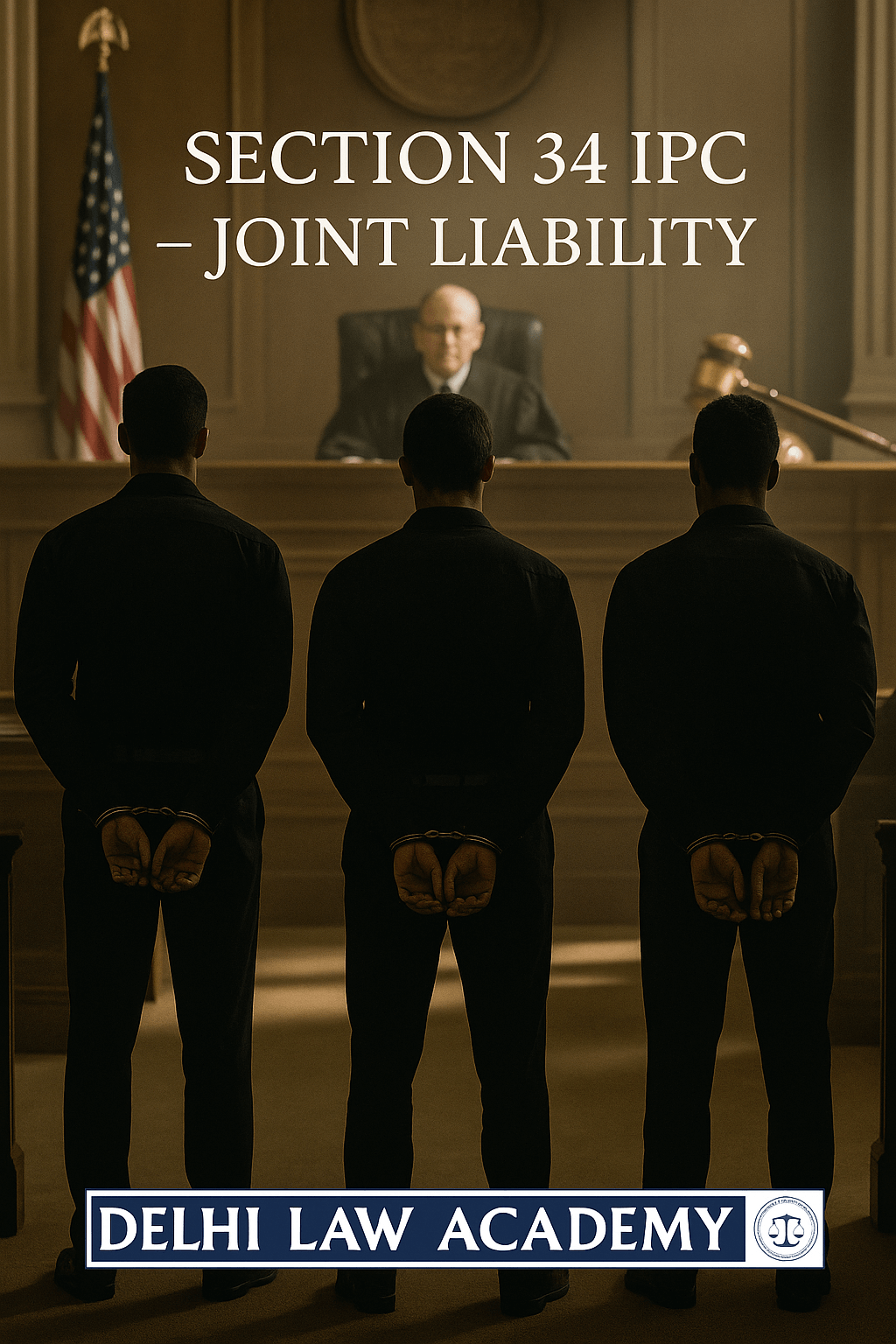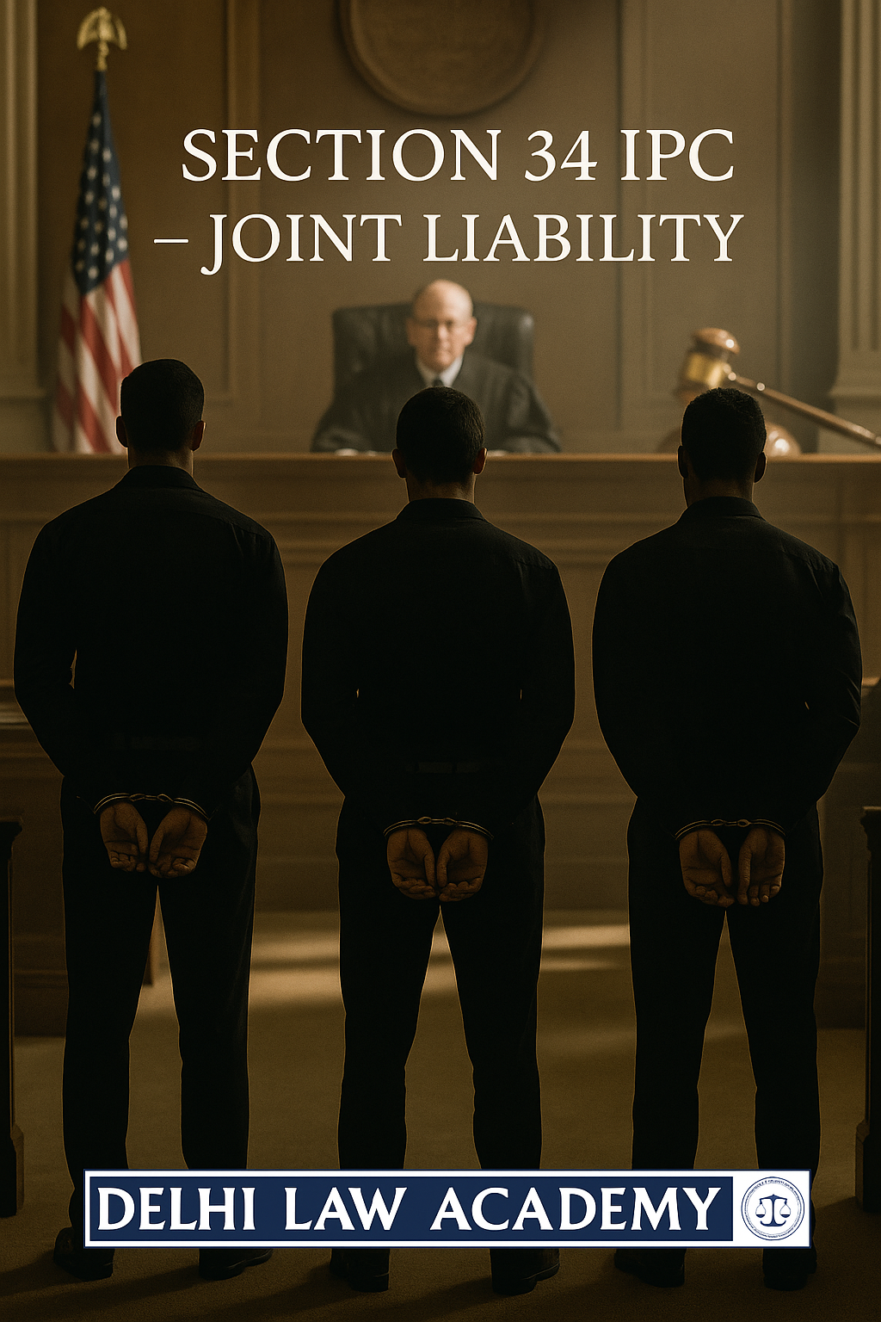
Vicarious Liability in Criminal Jurisprudence: Joint Liability in the Doing of a Criminal Act
Applicable Laws: Section 34 IPC | Section 3(5) Bharatiya Nyaya Sanhita (BNS)
Note: This topic is highly important for aspirants of the RJS, DJS, and other judicial service exams. Delhi Law Academy Jaipur explains the concept with legal clarity and judicial relevance.
What Is Vicarious Liability in Criminal Law?
Section 34 of the Indian Penal Code (IPC), now mirrored in Section 3(5) of the Bharatiya Nyaya Sanhita (BNS), embodies the principle of vicarious or joint criminal liability. This provision makes a person liable for a crime not personally committed by them, but by another individual with whom they shared a common intention.
It is essential to understand that Section 34 does not create a separate offence—it is a rule of evidence that fastens liability on individuals acting with a shared intent.
Essentials of Section 34 IPC / Section 3(5) BNS
- There must be a criminal act done by several persons.
- The act must be done in furtherance of a common intention.
- Physical presence at the scene of the crime is necessary, even if no direct action was performed.
- No overt act is required if common intention is proven through conduct or circumstances.
Nature of Criminal Act Under Section 34
The section speaks of a “criminal act by several persons.” As per Section 33 IPC, the word “act” includes both a single act or a series of acts. Thus, a criminal act under Section 34 can be a collective outcome of various individual acts performed in unison.
Key Legal Interpretations
- Common intention implies a pre-arranged plan, but it can also be formed spontaneously during the occurrence of the offence.
- Direct evidence of intention is rare; it is mostly inferred from circumstances, conduct, and acts.
- There is a distinction between same or similar intention and common intention; the former does not attract Section 34.
- The inference of common intention must be a necessary deduction from the case facts.
Crucial Legal Points for Judicial Exam Aspirants
- Even if a co-accused did not perform any overt act, if common intention is proven, they can be held liable.
- An omission can sometimes be treated as an act under Section 34.
- To invoke Section 34, it must be shown that the criminal act was done in concert and in furtherance of a shared intent.
- The act of guarding the scene or giving logistical support may be enough to incur liability under this section.
Postulates for Attracting Section 34
- The criminal act must not be by a single individual—it must involve several persons.
- The actions must be in furtherance of the common intention of all involved.
Conclusion
Section 34 IPC and Section 3(5) BNS are foundational to understanding joint criminal liability. For judiciary aspirants, this topic is not only crucial for preliminary and mains exams but also for understanding criminal law in real-life judicial practice.
Delhi Law Academy Jaipur continues to bring you expert explanations on complex legal topics to give you an edge in judicial service examinations.
📌 Frequently Searched Keywords
- Vicarious liability in criminal law
- Section 34 IPC explained
- Joint criminal liability under Indian law
- Section 3(5) BNS and common intention
- Common intention vs similar intention
- Judicial exam notes on IPC Section 34
- RJS DJS preparation criminal law
For expert coaching in RJS, DJS, and other judiciary exams, explore our Judicial Services Study Material or visit our Legal Blogs page for more law topics.

